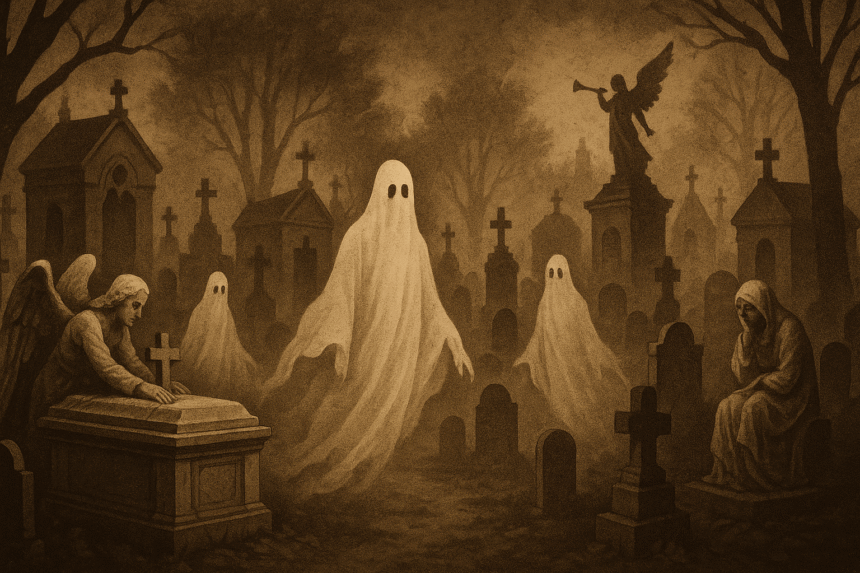Père-Lachaise Cemetery, located on the eastern edge of Paris, is more than a resting place — it is a blend of history, art, and myth that attracts millions of visitors each year. Renowned as the world’s most-visited cemetery, it offers a rare oasis of calm and greenery in one of Europe’s most densely populated cities. Amid its tree-lined paths and elaborate tombs lies a blend of bourgeois grandeur, revolutionary history, and ghostly lore.
A City of the Living and the Dead
Created in 1804 under Napoleon as Paris’s first municipal cemetery, Père-Lachaise initially struggled to attract burials because it was not consecrated ground and was located outside the city’s core. To raise its prestige, the authorities reinterred famous figures such as playwright Molière and poet Jean de La Fontaine, transforming it into a fashionable burial site. Later legends — including the reburial of the medieval lovers Héloïse and Abélard — further elevated its status.
Today, Père-Lachaise reflects two faces of Paris: the elegant bourgeois families whose ornate tombs line its avenues, and the city’s revolutionary spirit, enshrined at the Mur des Fédérés, where 147 members of the 1871 Paris Commune were executed. Nearby rest veterans of anti-fascist and resistance movements, anchoring the cemetery in France’s political and social memory.
Ghosts, Myths, and Mysterious Figures
Beyond its history, Père-Lachaise is steeped in ghost stories. According to Benoît Gallot, the cemetery’s director and author of The Secret Life of a Cemetery (2022), some claim it is the most haunted place in Paris. Mediums have reportedly entered after dark to commune with spirits said to linger among the tombs.
Two of the most-visited graves belong to international icons — Oscar Wilde and Jim Morrison. Wilde’s monument, designed by sculptor Jacob Epstein, famously lost part of its sculpture to vandalism, and was later enclosed in Plexiglas to protect it from lipstick marks left by admirers. Morrison, the legendary American rock singer, attracts a constant flow of fans, many of whom insist his spirit still roams the cemetery.
The Inventor of the “Horror Movie”
One of Père-Lachaise’s most remarkable residents is Étienne-Gaspard Robertson (1763–1837), a Belgian scientist and showman who pioneered the “phantasmagoria,” an early form of horror projection that used light and smoke to create ghostly illusions. His elaborate tomb captures the drama of his craft, decorated with skulls, winged bats, and sculpted figures frozen in terror — a fitting tribute to a man who turned fear into art.
The Spiritualist Who Came Back to Life — in Legend
Nearby lies Hippolyte Léon Denizard Rivail, better known by his pen name Allan Kardec, the founder of modern spiritualism. Inspired by a séance in 1855, Rivail claimed to have communicated with spirits who revealed he had once lived as a druid. His books on spirit communication became bestsellers, and even after his death, legends persisted. Visitors still touch the neck of his statue to make wishes, believing his promise that fulfilled wishes should be repaid with flowers — a ritual that continues to this day.
The Vampire Countess and the Number of the Beast
At the cemetery’s summit stands the imposing tomb of Countess Elisabeth Strogonoff Demidoff, a Russian noblewoman who died in Paris in 1818. Legend has it that she promised two million roubles to any man who could spend a full year locked in her crypt beside her crystal coffin. The macabre tale drew hundreds of would-be suitors, many of whom allegedly fled in terror — though modern historians say the story was likely invented by 19th-century newspapers.
Close by is the Kellerman family tomb, a monument tied to Napoleonic military history but notorious for bearing the number 666 — the biblical “number of the beast.” The site’s secular nature, unlike older Catholic cemeteries, has made it a magnet for occult enthusiasts. In the 1970s and 1980s, it was said to host Satanist gatherings, though cemetery authorities insist such activities have since ceased.
A Living Legend
Despite the myths, Père-Lachaise remains one of Paris’s most beloved landmarks — a space where art, politics, and spirituality converge. Its blend of history and mystery continues to inspire curiosity. Whether visitors come to pay respects to icons like Edith Piaf and Chopin, to seek out the graves of revolutionaries, or simply to stroll beneath its whispering trees, Père-Lachaise stands as a hauntingly beautiful reflection of Paris itself — elegant, layered, and eternally alive with stories.








